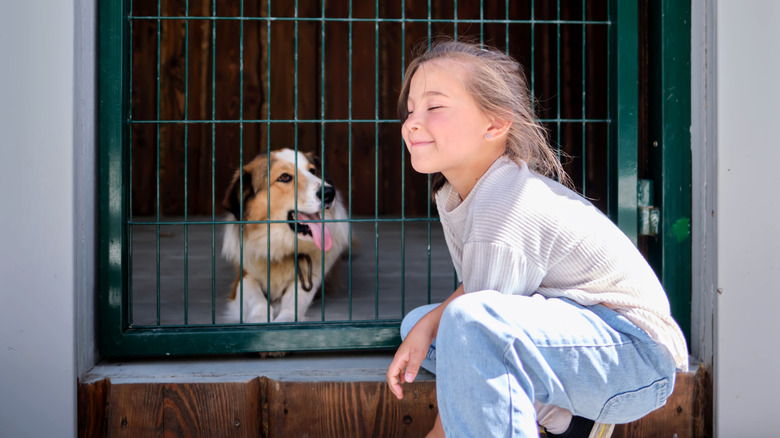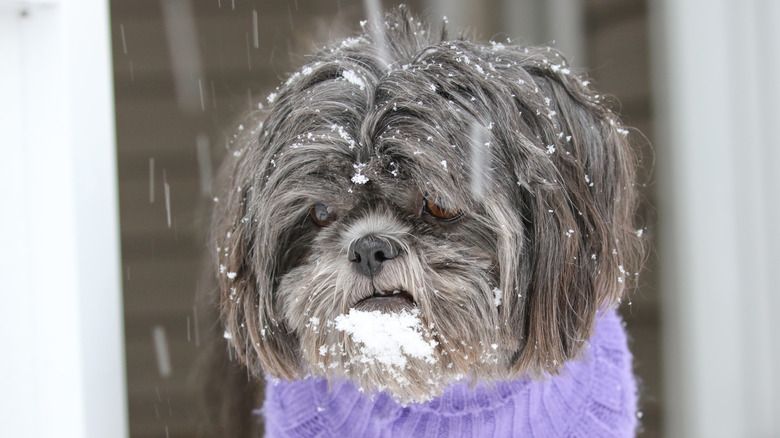The One Time Of Year You Should Think Twice About Adopting A Dog
For many adults, adopting a dog evokes the same emotions that a child feels when bringing home a brand-new toy. Excitement, happiness, anticipation. Choosing a dog from a shelter can be far more rewarding than buying one from a pet store or breeder, but it's important to adopt wisely. The time of year can make a difference in how quickly and successfully your dog adapts to a new environment and becomes trained, or retrained. Some pet parents discourage adopting a dog in the winter if you live in a region that experiences sub-zero temps or frequent snowfall.
Unless you plan on adding a breed that thrives in cold weather, like a Siberian husky or Alaskan malamute, you could face challenges with a winter adoption that you wouldn't face in warmer months. It's also important to consider that the first few weeks with a new dog could come with some challenges that have nothing to do with the weather, especially if the dog was rescued from an abusive situation; it could take a couple of months for the pup to truly feel comfortable.
Does this mean you should never adopt a dog in winter? Not necessarily. You can't control when you fall in love with a dog or when one falls in love with you. So, if you happen to connect with a shelter dog in the winter and don't want to wait until spring to adopt it, don't! Just be prepared for some potential (but not guaranteed) weather-related hiccups during your dog's adjustment period.
Cold winter weather could interfere with training your dog
Puppies obviously need to be house-trained within their first few months of life, but sometimes adult shelter dogs need to be retrained after being adopted. Training a dog to eliminate outdoors takes months, even if you start on a sunny 75-degree day. Replace that temperature with a 5-degree day, and you could end up extending that timeline; your new companion may not want to be outside long enough to do its numbers. If you force it to stay outdoors until it handles its business, you could increase the risk of frostbite and slips, unless you give it a warm sweater and dog winter boots.
Snow could also pose a challenge during the potty training period. While some dogs get excited by the fluffy white stuff and even enjoy playing in it, others find it frightening or confusing. They might take one step on it and immediately run back inside. Even trained dogs behave this way if they're not used to snow, like the ones in cities that see measurable snowfall only once every few years. To resolve this issue, owners need to shovel the snow in a small area, exposing the lawn so their dogs can be more comfortable.
If you'd rather skip these added hurdles, you don't want a cold-climate breed, and you haven't fallen in love with a pup yet, wait until temps warm up before adding a new dog to your family. You could end up shortening and simplifying the training period by simply waiting until spring to adopt.

